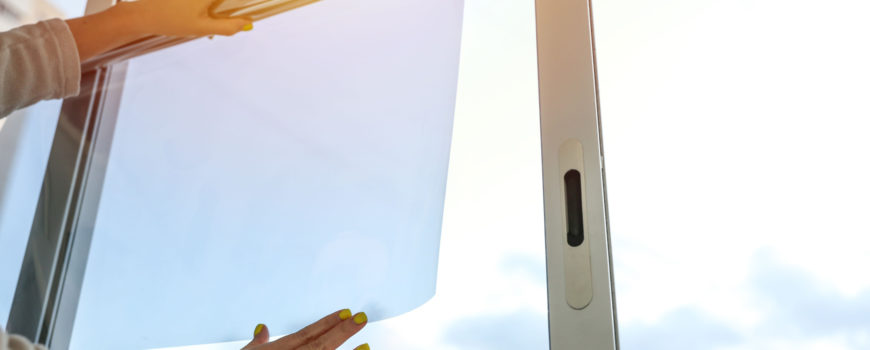Infrared vs UV Light for Window Film Insights
Exploring the Benefits of Infrared vs UV Light for Window Film
“Infrared vs UV Light for Window Film” embodies the critical considerations for homeowners and commercial property managers alike who seek to optimize their building’s protection and comfort. Understanding the differences and impacts of these two forms of light is essential when selecting the most effective window film solutions to enhance your space’s ambiance and safeguard its interiors.
Most people recognize the comfort and aesthetic value that natural light brings to our spaces, but what’s less commonly understood is its composition and the effects it can have on our environment and health. Specifically, infrared and UV light, both invisible to the naked eye, play significant roles in the comfort, safety, and longevity of our interiors.
Delve into the differences between infrared vs UV light for window film and understand why addressing them through window film is not just a matter of aesthetic preservation but an essential aspect of health and efficiency for modern living spaces.
When it comes to protecting your home, office, or vehicle, not all types of light are created equal. In the quest for comfort and safety, understanding the differences between infrared (IR) vs ultraviolet (UV) light for window film can be crucial.
When you’re ready to make your purchase, the Sun Control Center is here to assist you in choosing the perfect window film for your home. Our team understands the nuances of infrared vs ultraviolet light for window film protection and will guide you through our extensive selection of sun control products. Rest assured that when it comes to installation, our experienced professionals will ensure seamless integration of the window film, accentuating your home’s comfort and aesthetic appeal while maximizing protection against harmful rays.
Understanding Infrared vs UV Light for Window Film
The distinction between Infrared (IR) light vs Ultraviolet (UV) light for window film is crucial when considering their impact for window protection. IR light is part of the electromagnetic spectrum that we interpret as heat; it’s what makes sunlight feel warm on our skin. Without adequate protection, IR light can cause a greenhouse effect, intensely heating up interior spaces.
In contrast, UV light carries more energy than IR due to its shorter wavelength, making it potentially harmful to both living tissue and materials. It can lead to health risks such as skin cancer and contributes to the fading and deterioration of fabrics, artwork, and furnishings.
For window films, understanding this difference matters because it speaks to the dual purpose these films serve. They are not just about heat control but also about protecting individuals and valuables from invisible yet potentially harmful UV rays. A well-engineered window film will mitigate the unwanted effects of both Infrared and UV light, ensuring a comfortable and safe indoor environment.
What is Infrared Light?
Infrared light, or IR light, is a type of radiant energy invisible to the human eye. It’s experienced as heat and makes up a portion of the electromagnetic spectrum. IR light is responsible for the warmth you feel on your skin when standing in the sun or near a heat source.
Why Block Infrared Light?
The primary benefit of blocking IR light with window film is temperature control. IR light entering through windows significantly increases indoor temperatures. By applying window film that filters out IR light, you reduce heat gain, which helps maintain a more consistent and comfortable indoor climate. This reduction in heat can also lead to lower energy bills by easing the workload on your air conditioning system.
What is UV Light?
Ultraviolet light, or UV light, is also part of the electromagnetic spectrum but has a shorter wavelength than both visible light and IR light. It’s known for its role in causing sunburns, but it’s also associated with more serious health risks like skin cancer. Just as with IR light, we cannot see UV light with the naked eye.
Why Block UV Light?
UV light is notorious for leading to both health and material degradation issues. By blocking UV rays, which window film effectively does, you’re protecting your skin and eyes from potential damage. Additionally, UV light can cause furnishings, artwork, flooring, and other decor elements to fade over time. The use of UV-blocking window film preserves the integrity and color of the interior of your space.
The Combined Effect of Targeting Infrared and UV Light
Window film that effectively targets both infrared (IR) and ultraviolet (UV) light provides a comprehensive solution for enhancing protection against harmful rays while ensuring optimal comfort within indoor spaces. The following are some of the benefits:
- Reduction of Heat: Window films designed to block IR light cut down pronouncedly on the warmth that can make indoor spaces uncomfortable.
- Protection from Harmful Rays: By filtering out UV light, window films protect your skin health and prevent the fading of interior furnishings caused by prolonged UV exposure.
- Energy Efficiency: Blocking these rays is also good for your wallet—with reduced heat gain, there’s less need for air conditioning, saving you money on energy costs.
- Privacy and Glare Reduction: Another bonus of window film is its ability to deter prying eyes and reduce the sun’s glare, ensuring privacy and minimizing eye strain.
Having delineated the distinct yet equally pivotal roles of Infrared vs UV light for window film, along with the compelling advantages of obstructing these rays from permeating your living spaces, the value of window films emerges undisputed. They are not mere accessories but essential components that not only contribute to a sustainable environment by enhancing energy efficiency but also secure the longevity and aesthetic of your interiors.
Beyond that, they play a significant part in safeguarding our health by diminishing the silent yet hazardous effects of these invisible spectrums of light. It is with this knowledge that one can make informed decisions about the right window film to protect and optimize their indoor living spaces.
Determining the effectiveness of window films in blocking IR and UV light is the next step in choosing window film for the ultimate protection in your home.
Determining Window Film Effectiveness Against Infrared and UV Light
When looking to determine the amount of infrared vs UV light for window films to block, it’s essential to examine the film specifications provided by the manufacturer. These specifications, often found on technical datasheets or product labels, include two critical metrics: Visible Light Transmission (VLT) and the Solar Heat Gain Coefficient (SHGC):
- Visible Light Transmission (VLT) measures the percentage of visible light that is transmitted through the film. Although VLT does not indicate IR or UV blocking directly, films with lower VLT typically reduce more heat, which suggests higher IR light rejection.
- Solar Heat Gain Coefficient (SHGC) indicates the fraction of solar energy admitted through the window film and is a critical value for assessing IR light blocking. A lower SHGC means the film is more effective at reducing heat gain from IR light.
For protection against UV light, look for the UV Rejection rate. Quality window films will reject up to 99% of UV rays, safeguarding your interior from the UV light that can cause fading and skin damage.
Always look for these performance indicators or ask a professional, like those at Sun Control Center, for clarity on the infrared vs UV light for window films rejection rate to ensure proper protection for your space.
Choosing the Right Window Film with Sun Control Center
From reducing the risk of skin cancer to protecting the longevity of your interior decor, the benefits of determining the rejection rates of infrared vs UV light for window films are clear. With lower energy costs, enhanced comfort, and increased privacy, selecting the right window film will have a profound effect on your everyday life. By integrating a strategic solution such as window film offered by Sun Control Center with 3M technology, we gain control over these environmental factors to enhance our daily living spaces.
Sun Control Center’s range of 3M window films provides an effective barrier against these invisible spectrums, delivering a multitude of benefits. The application of their window films results in a palpable reduction in indoor heat, safeguards against the harmful aspects of UV exposure, and upholds the aesthetic and structural integrity of interior spaces. This smart adaptation not only elevates comfort and protection but also introduces energy savings through diminished reliance on air conditioning systems—a cost-effective and environmentally conscious outcome.
The virtues of window films transcend simple aesthetic enhancements, standing as pivotal investments for both personal wellness and environmental sustainability. For more information on selecting the perfect window film that meets all your needs, contact Sun Control Center. Our experts are ready to help you make an informed decision and ensure that you enjoy all the advantages that a high-quality window film can offer.

